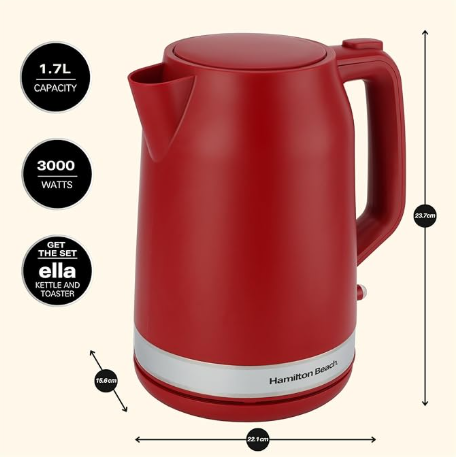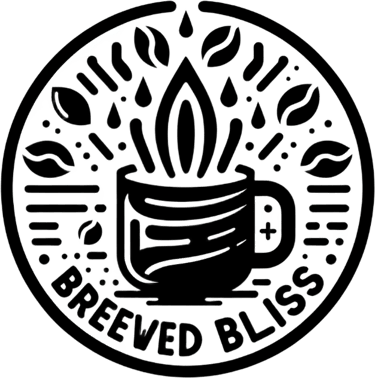Understanding the Importance of Water Temperature: How Your Kettle Affects It
KETTLE GUIDE
10/7/20257 min read


The Science of Water Temperature
Water is a unique substance, possessing distinctive physical and chemical properties that change with temperature. Understanding the behavior of water at various temperatures is crucial, especially when preparing beverages. As the temperature increases, the kinetic energy of water molecules also rises, leading to a greater ability to dissolve substances. This solubility is particularly relevant in the context of beverages, where the extraction of flavors depends significantly on water temperature.
For instance, when brewing tea, the temperature of the water plays a pivotal role in releasing tannins and other compounds from the leaves. Green tea, often favored for its subtle flavors, is ideally prepared using water temperatures between 160°F to 180°F (71°C to 82°C). In contrast, black tea requires higher temperatures, typically between 190°F to 212°F (88°C to 100°C), to fully extract its robust flavors. Similarly, coffee brewing aligns with temperature’s influence; most brewing methods recommend a temperature range of 195°F to 205°F (90°C to 96°C). This specific range ensures optimal solubility of oils and acids in the coffee grounds, contributing to a balanced flavor profile.
The rate at which chemical reactions occur is also dependent on water temperature. Higher temperatures can accelerate reactions, which can be beneficial or detrimental, depending on the context. In cold beverages, lower temperatures can inhibit the extraction of flavors, leading to a flat taste. Therefore, understanding and applying the correct water temperature is essential not only for flavor extraction but also for enhancing the overall drinking experience. This knowledge equips consumers and enthusiasts with the tools needed to make informed decisions about their brewing practices, allowing for a more pleasurable and refined drinking experience.
How Your Kettle Affects Water Temperature
The type of kettle used to heat water plays a crucial role in determining the final water temperature, which directly impacts the flavor and quality of beverages. There are several types of kettles available in the market, each employing different methods for heating water. Understanding the differences among these kettles can help consumers choose the most suitable one for their needs.
Stovetop kettles are among the most traditional options. They are typically made of metal and can heat water on a variety of heat sources, including gas, electric, and induction stoves. One of the primary advantages of a stovetop kettle is the ability to control the heat manually, allowing users to monitor the temperature of the water closely. However, this method may not be precise, as it depends heavily on the user's knowledge of how long to heat the water for the desired temperature.
Electric kettles, on the other hand, offer a more advanced heating solution. Many models come equipped with temperature control settings that allow users to select a precise temperature for brewing different beverages, such as green tea or coffee. This feature is particularly beneficial, as certain beverages require specific water temperatures to unlock their optimal flavors. In addition to temperature control, electric kettles often provide faster heating times than stovetop kettles, making them a convenient option for busy individuals.
Traditional kettles, including those made from ceramic or glass, also have their place in the market. They may not offer the same level of temperature control or efficiency as electric kettles, but they can contribute to the aesthetic appeal of a kitchen. Although they heat water slowly, many enthusiasts appreciate the craftsmanship and design of these kettles.
In selecting a kettle that best meets one’s specific needs, consumers should consider features such as temperature settings, heating speed, and design. By understanding how different kettles function, consumers can select the most suitable kettle for their beverage preparation, ensuring that they achieve the desired water temperature for an optimal drinking experience.
Practical Tips for Achieving the Perfect Water Temperature
To achieve the ideal water temperature for various beverages and culinary needs, several practical techniques can be employed using a kettle. One fundamental aspect is to be aware of the boiling points specific to your elevation, as water's boiling point decreases with altitude. For example, at sea level, water boils at 100°C (212°F), while at higher altitudes, the boiling point can drop significantly. Consequently, adjusting your heating process based on your geographical location can prevent overheating water.
Using a thermometer can greatly enhance the accuracy of your water temperature monitoring. Digital thermometers are particularly beneficial because they provide real-time readings, ensuring that you heat the water to the precise temperature required for your beverage or dish. For example, green tea is best steeped in water between 70°C and 80°C (158°F and 176°F), while black tea generally requires near boiling water around 90°C (194°F). A thermometer can aid in maintaining these optimal ranges, avoiding the common pitfall of over-steeping due to excessively hot water.
Timing also plays a vital role in achieving the desired water temperature. For electric kettles, most models come equipped with preset temperature settings that allow users to select specific temperatures ideal for different beverages. If your kettle lacks such features, a general rule of thumb is to monitor your kettle closely. Once the water begins rapidly boiling, let it cool for about 30 seconds to attain a temperature roughly around 90°C (194°F). Avoid letting water sit on the heat for too long, as this can lead to evaporation and an undesired concentration of salts or other minerals, affecting the taste and quality.
Additionally, be wary of common temperature-related mistakes. For example, pouring boiling water directly over delicate tea leaves can result in overly bitter flavors. It is advisable to remove the kettle from heat just before it reaches a full boil to ensure the perfect temperature balance. By implementing these strategies, you can fine-tune your technique, ensuring that you consistently achieve the right water temperature for all your culinary and beverage needs.
Case Studies: Brewing the Perfect Cup
Water temperature plays a pivotal role in the brewing process, influencing the flavor, aroma, and overall quality of beverages. Numerous case studies illustrate how deviations in water temperature can lead to significantly different results in both tea and coffee preparation. For instance, when brewing green tea, the ideal temperature typically hovers around 160°F to 180°F (70°C to 80°C). A study involving a control group highlighted that steeping green tea at lower temperatures preserved its delicate flavors and prevented bitter notes from developing. Conversely, using water that was too hot can easily scorch the leaves, leading to a less enjoyable cup.
Another case study focused on the preparation of black tea, which requires higher temperatures ranging from 200°F to 212°F (93°C to 100°C) for optimal extraction. During the experiments, varying degrees of water temperature led to noticeable differences in the resultant brews. Samples brewed at 200°F yielded a more robust flavor profile, characterized by rich, malted notes, while those brewed at excessive temperatures resulted in overly tannic and astringent tastes.
Turning to coffee, the water temperature largely impacts the extraction of solubles from the coffee grounds. Research conducted on cold brew coffee demonstrated that steeping grounds in water at room temperature (around 60°F or 15°C) over an extended period resulted in a smoother, less acidic beverage. In contrast, brewing coffee at optimal temperatures around 195°F to 205°F (90°C to 96°C) allowed for optimal flavor extraction, bringing forth a balance of acidity and sweetness. Overall, these case studies underscore the necessity for precision in water temperature during the brewing process. Such precision not only enhances the quality of beverages but also elevates the enjoyment for both enthusiasts and casual drinkers, solidifying water temperature's importance in crafting the perfect cup.
One of our favorite choice of kettles...
1.Hamilton Beach Electric Kettle


Click 'Shop Now!' to find on Amazon now!...
📐 Specs
Capacity: 1.7 liters
Power / Wattage: 1,500 W
Body / Material: Stainless steel or borosilicate glass + stainless steel heating plate
Safety Features: Auto shut-off, boil‑dry protection
Serving / Base: Cordless serving with 360° swivel base
Lid & Opening: Hinged or flip lid (depending on model)
Filter: Removable mesh / anti-scale filter
Water Window / Indicator: Clear window or gauge to see water level
Dimensions / Size (approx): around 21 cm × 16 cm × 22 – 23 cm (varies by version)
Extras: LED indicator light during boiling, concealed heating element
Pros & Cons
Pros
Fast Boiling: The 1,500 W element heats water reasonably quickly for general use.
Safe Design: Auto shut-off and boil-dry protection reduce the risk of accidents in shared or busy spaces.
Cordless Pouring: The 360° swivel base lets you place the base near a socket and lift the kettle without dragging a cord.
Good Capacity for Sharing: 1.7 L is enough to make multiple cups or cater to roommates without constant refills.
Clear Water Level: The window/gauge helps you see how much water is inside, avoiding overflows or underfills.
Removable Filter: Helps with scale and keeps water clearer over time.
Stylish / Modern Look: Many models are sleek and attractively designed, which is a plus in compact, visible spaces.
Cons
Exterior Gets Hot: Because many models are stainless steel or glass, the outer surface can become warm to the touch.
Lid Mechanism Issues: Some users report the lid or hinge can degrade or become less effective over time.
Small Opening: The lid or opening may be too small to clean easily with a hand or brush.
Wobble / Base Stability: In some reviews, kettle-to-base fit was slightly loose, causing minor wobble when boiling.
No Temperature Control: It’s a basic kettle — you can’t dial in lower temps for sensitive teas.
Durability Concerns: A few users report the auto-shutoff feature failing after extended use.
My Review
I used the Hamilton Beach 1.7 L kettle in a small kitchen setup with limited counter space, and here’s what stood out to me:
Performance & Speed: For everyday tasks — tea, coffee, instant meals — it performed solidly. It’s not instantaneous, but it’s fast enough that waiting is rarely frustrating.
Practical Design: The cordless base is genuinely helpful when space is tight. You can keep the base tucked near an outlet and move the kettle around easily. The water-level window prevents “oops, overfill” moments.
Safety Is Reassuring: In a shared or dorm environment, the automatic shut-off is a must. It gives peace of mind if you get distracted or walk away.
Aesthetic Bonus: It doesn’t look like a bulky plastic tub. It fits visually into a nicer kitchen space, which matters when your kettle is always in view.
However, it’s not flawless:
The outer body does warm up, so you need to be careful where you place it and which parts you touch.
Cleaning can be a bit awkward due to the lid shape or small opening — I had to use a brush for the corners sometimes.
I also noticed a slight give when the kettle sits on its base, especially at high boil — nothing dangerous, but perceptible.
